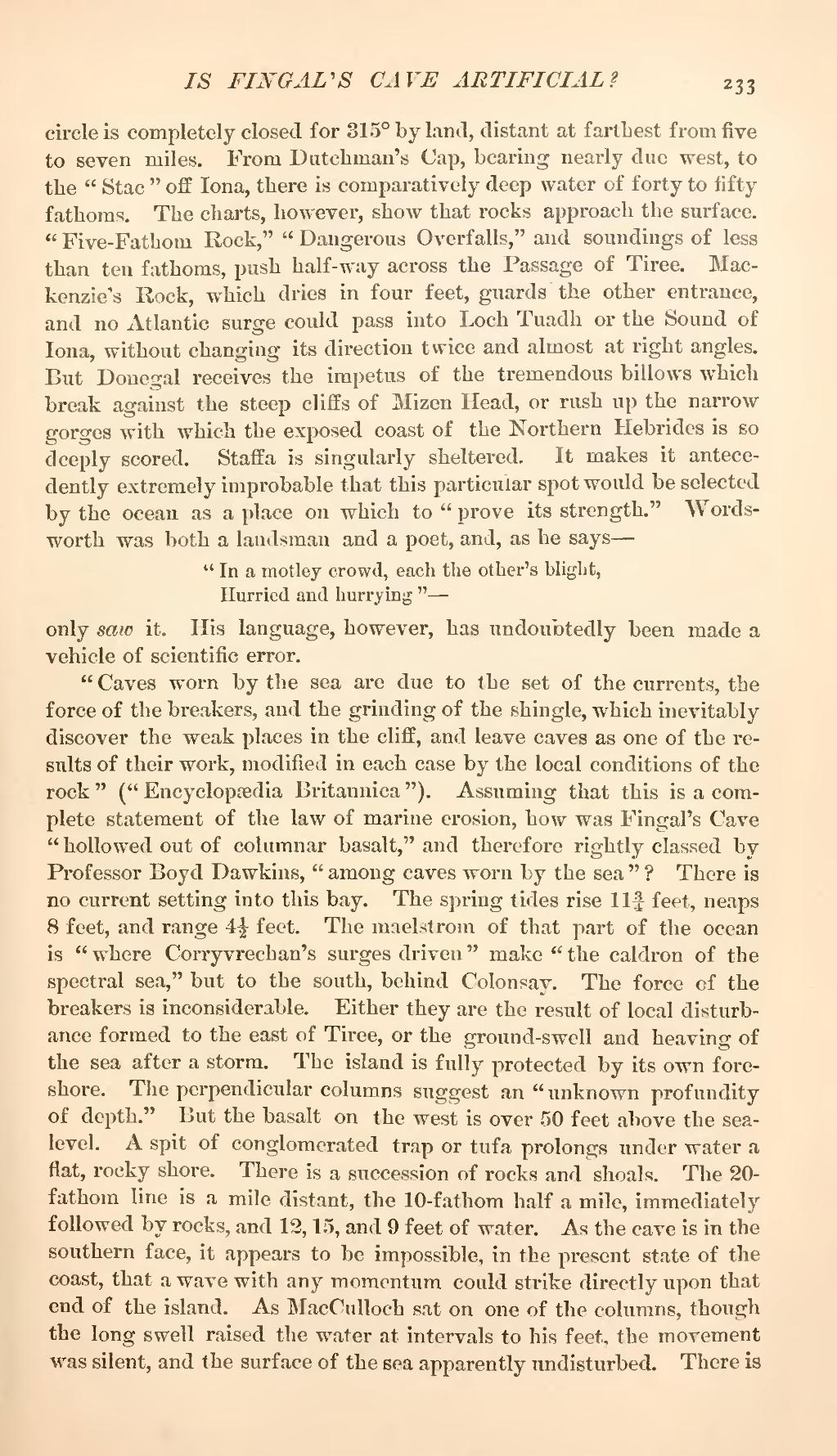circle is completely closed for 315° by land, distant at farthest from five to seven miles. From Dutchman's Cap, bearing nearly due west, to the "Stac" off Iona, there is comparatively deep water of forty to fifty fathoms. The charts, however, show that rocks approach the surface. "Five-Fathom Rock," "Dangerous Overfalls," and soundings of less than ten fathoms, push half-way across the Passage of Tiree. Mackenzie's Rock, which dries in four feet, guards the other entrance, and no Atlantic surge could pass into Loch Tuadh or the Sound of Iona, without changing its direction twice and almost at right angles. But Donegal receives the impetus of the tremendous billows which break against the steep cliffs of Mizen Head, or rush up the narrow gorges with which the exposed coast of the Northern Hebrides is so deeply scored. Staffa is singularly sheltered. It makes it antecedently extremely improbable that this particular spot would be selected by the ocean as a place on which to "prove its strength." Wordsworth was both a landsman and a poet, and, as he says—
Hurried and hurrying"—
only saw it. His language, however, has undoubtedly been made a vehicle of scientific error.
"Caves worn by the sea are due to the set of the currents, the force of the breakers, and the grinding of the shingle, which inevitably discover the weak places in the cliff, and leave caves as one of the results of their work, modified in each case by the local conditions of the rock" ("Encyclopædia Britannica"). Assuming that this is a complete statement of the law of marine erosion, how was Fingal's Cave "hollowed out of columnar basalt," and therefore rightly classed by Professor Boyd Dawkins, "among caves worn by the sea"? There is no current setting into this bay. The spring tides rise 1134 feet, neaps 8 feet, and range 412 feet. The maelstrom of that part of the ocean is "where Corryvrechan's surges driven" make "the caldron of the spectral sea," but to the south, behind Colonsay. The force of the breakers is inconsiderable. Either they are the result of local disturbance formed to the east of Tiree, or the ground-swell and heaving of the sea after a storm. The island is fully protected by its own foreshore. The perpendicular columns suggest an "unknown profundity of depth." But the basalt on the west is over 50 feet above the sea level. A spit of conglomerated trap or tufa prolongs under water a flat, rocky shore. There is a succession of rocks and shoals. The 20 fathom line is a mile distant, the 10-fathom half a mile, immediately followed by rocks, and 12, 15, and 9 feet of water. As the cave is in the southern face, it appears to be impossible, in the present state of the coast, that a wave with any momentum could strike directly upon that end of the island. As MacCulloch sat on one of the columns, though the long swell raised the water at intervals to his feet, the movement was silent, and the surface of the sea apparently undisturbed. There is

